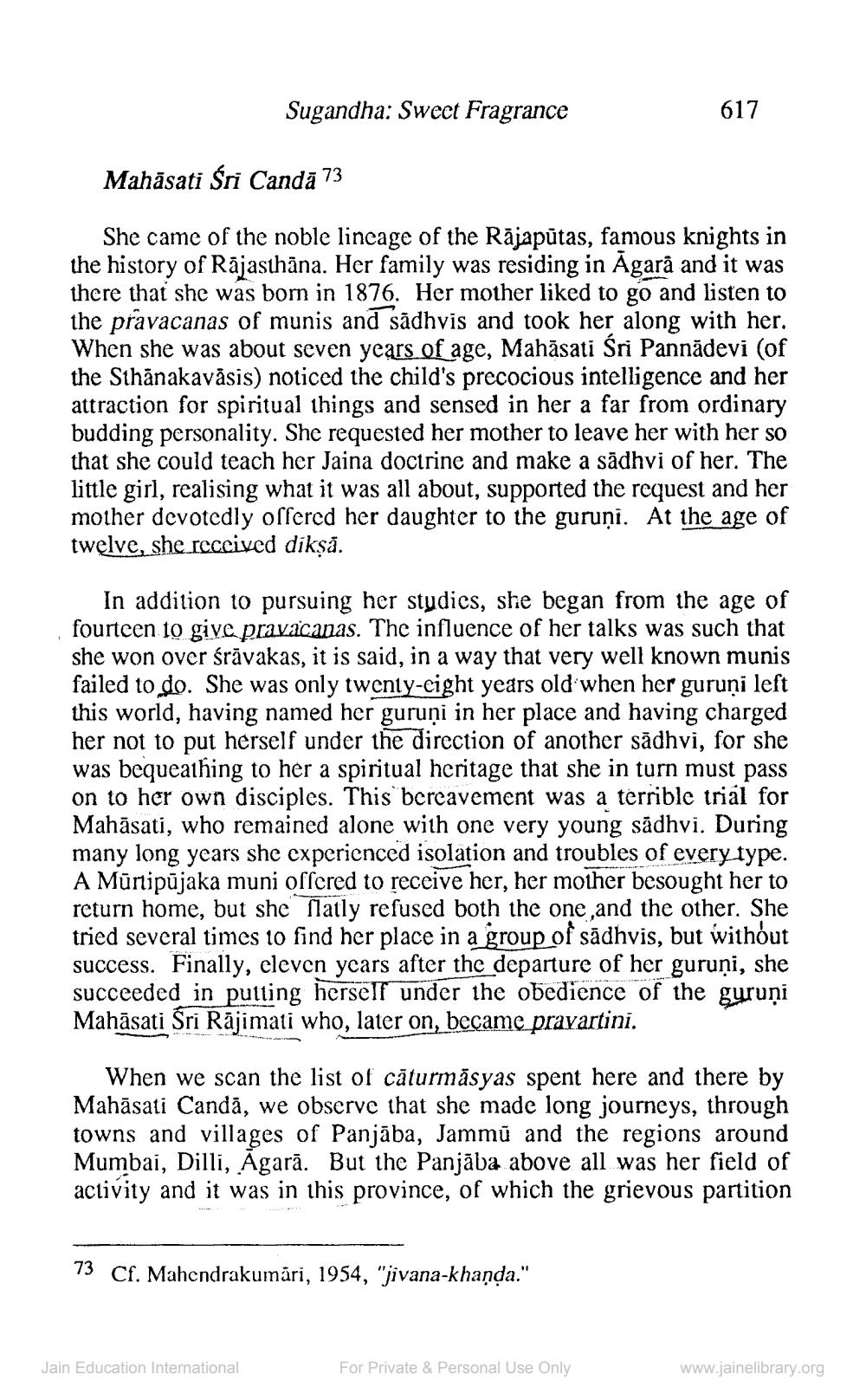________________
Sugandha: Sweet Fragrance
617
Mahāsati śrî Candā 73
She came of the noble lineage of the Rājapūtas, famous knights in the history of Rājasthāna. Her family was residing in Agarā and it was there that she was born in 1876. Her mother liked to go and listen to the pravacanas of munis and sādhvis and took her along with her. When she was about seven years of age, Mahasati Sri Pannādevi (of the Sthānakavåsis) noticed the child's precocious intelligence and her attraction for spiritual things and sensed in her a far from ordinary budding personality. She requested her mother to leave her with her so that she could teach her Jaina doctrine and make a sādhvi of her. The little girl, realising what it was all about, supported the request and her mother devotedly offered her daughter to the guruņi. At the age of twelve, she received dikṣā.
In addition to pursuing her studies, she began from the age of fourteen to give pravacanas. The influence of her talks was such that she won over śrāvakas, it is said, in a way that very well known munis failed to do. She was only twenty-eight years old when her guruņi left this world, having named her guruni in her place and having ch her not to put herself under the direction of another sādhvi, for she was bequeathing to her a spiritual heritage that she in turn must pass on to her own disciples. This bereavement was a terrible trial for Mahāsati, who remained alone with one very young sādhvi. During many long years she experienced isolation and troubles of every type. A Mūripūjaka muni offered to receive her, her mother besought her to return home, but she satly refused both the one and the other. She tried several times 10 find her place in a group of sādhvis, but without success. Finally, cleven years after the departure of her guruņi, she succeeded in putting herself under the obedience of the guruņi Mahāsati Sri Rājimati who, later on, became pravartini.
When we scan the list of căturmāsyas spent here and there by Mahāsati Candā, we observe that she made long journeys, through towns and villages of Panjāba, Jammu and the regions around Mumbai, Dilli, Agarā. But the Panjāba above all was her field of activity and it was in this province, of which the grievous partition
73 Cf. Mahendrakumāri, 1954, "jivana-khanda."
Jain Education International
For Private & Personal Use Only
www.jainelibrary.org




